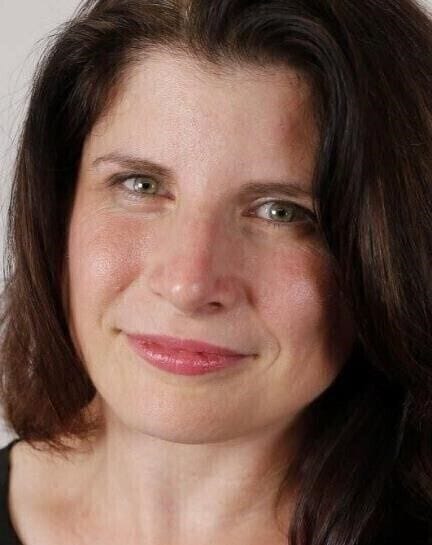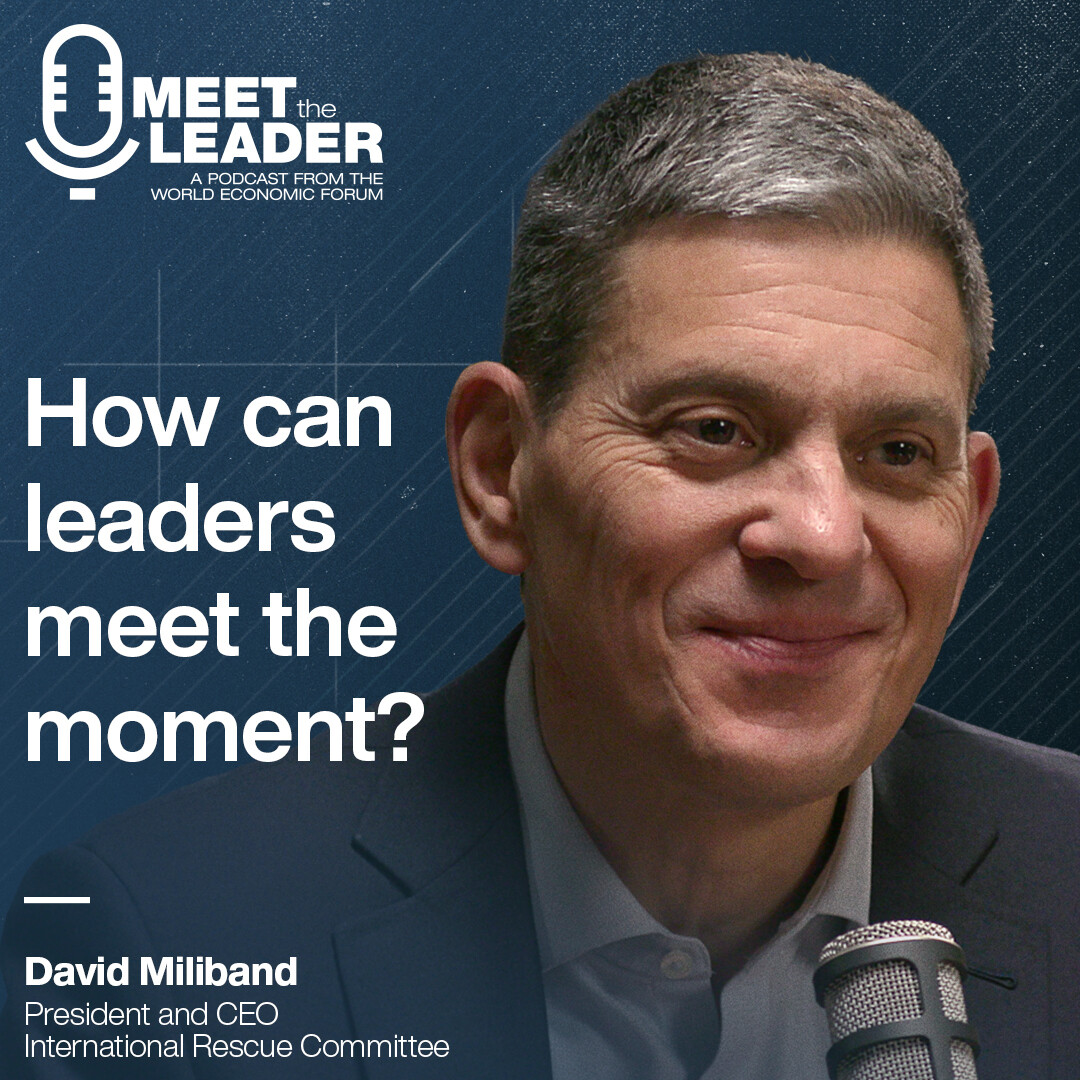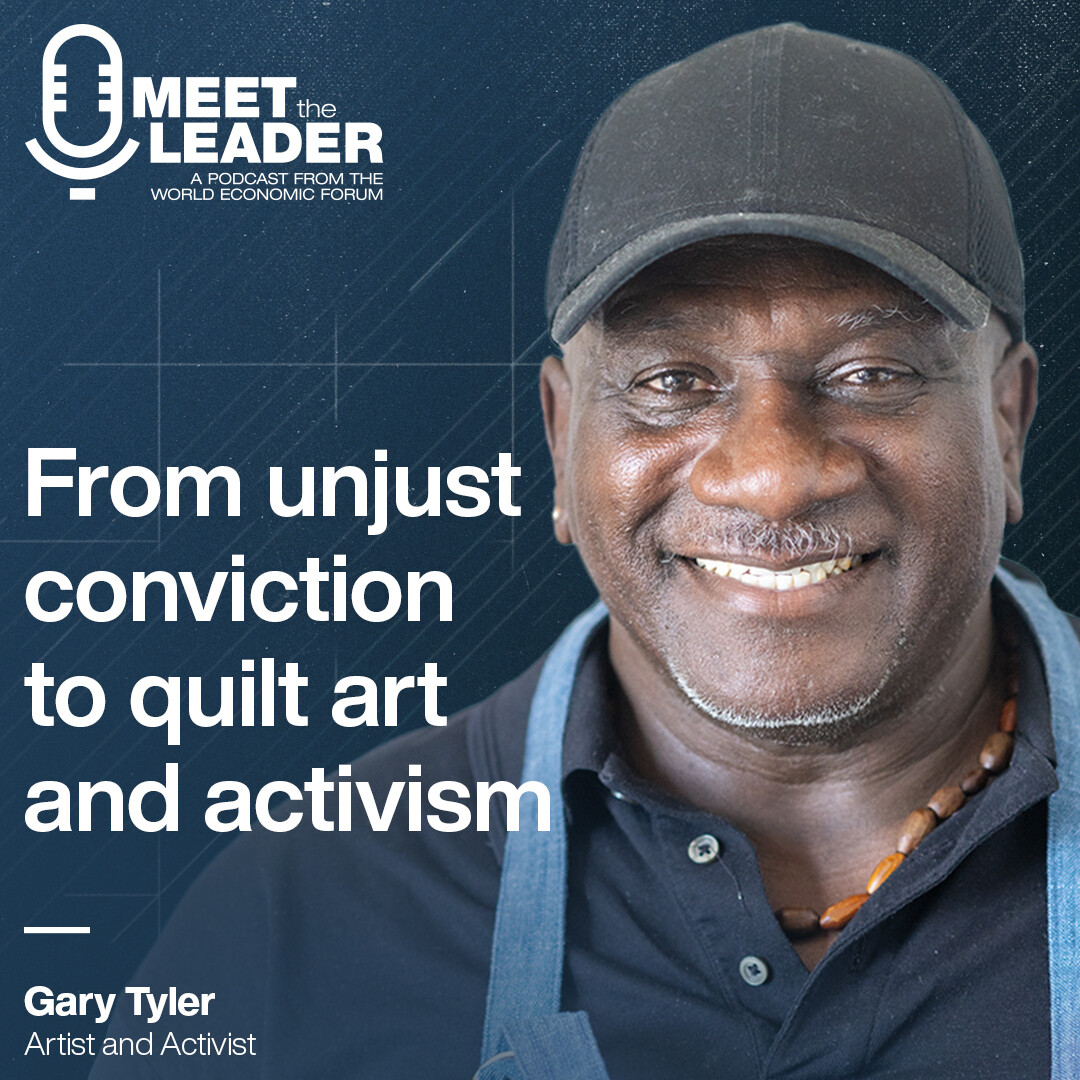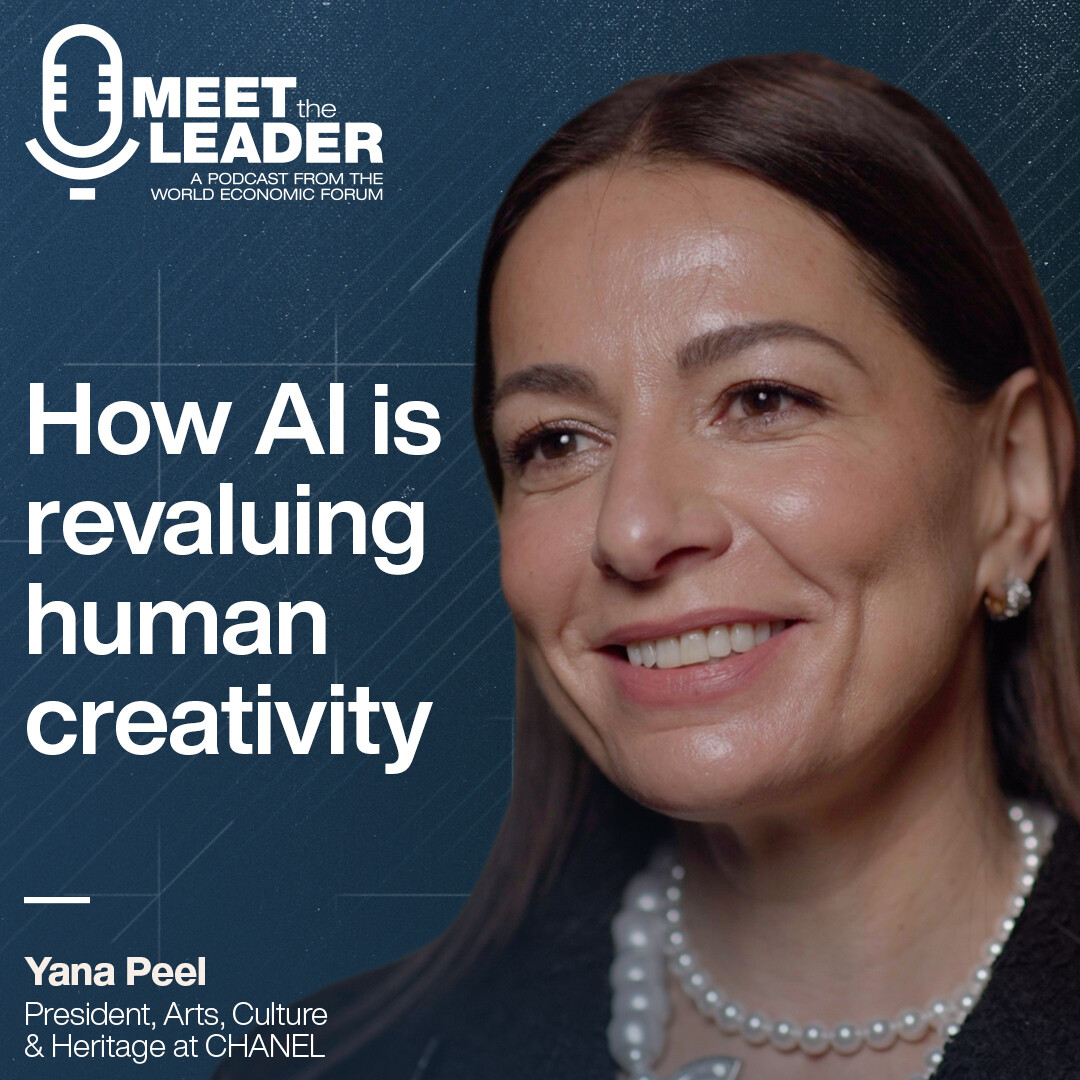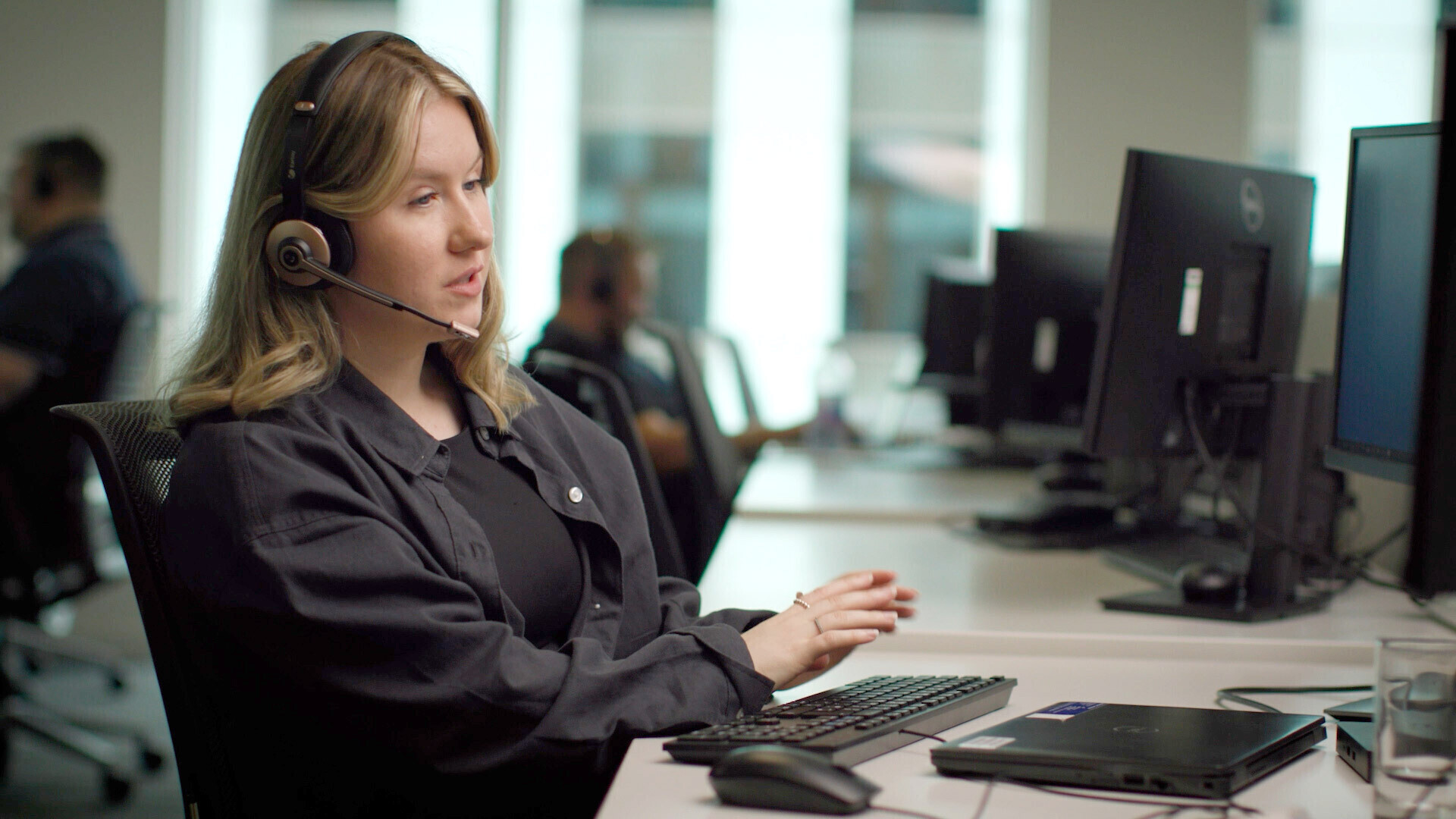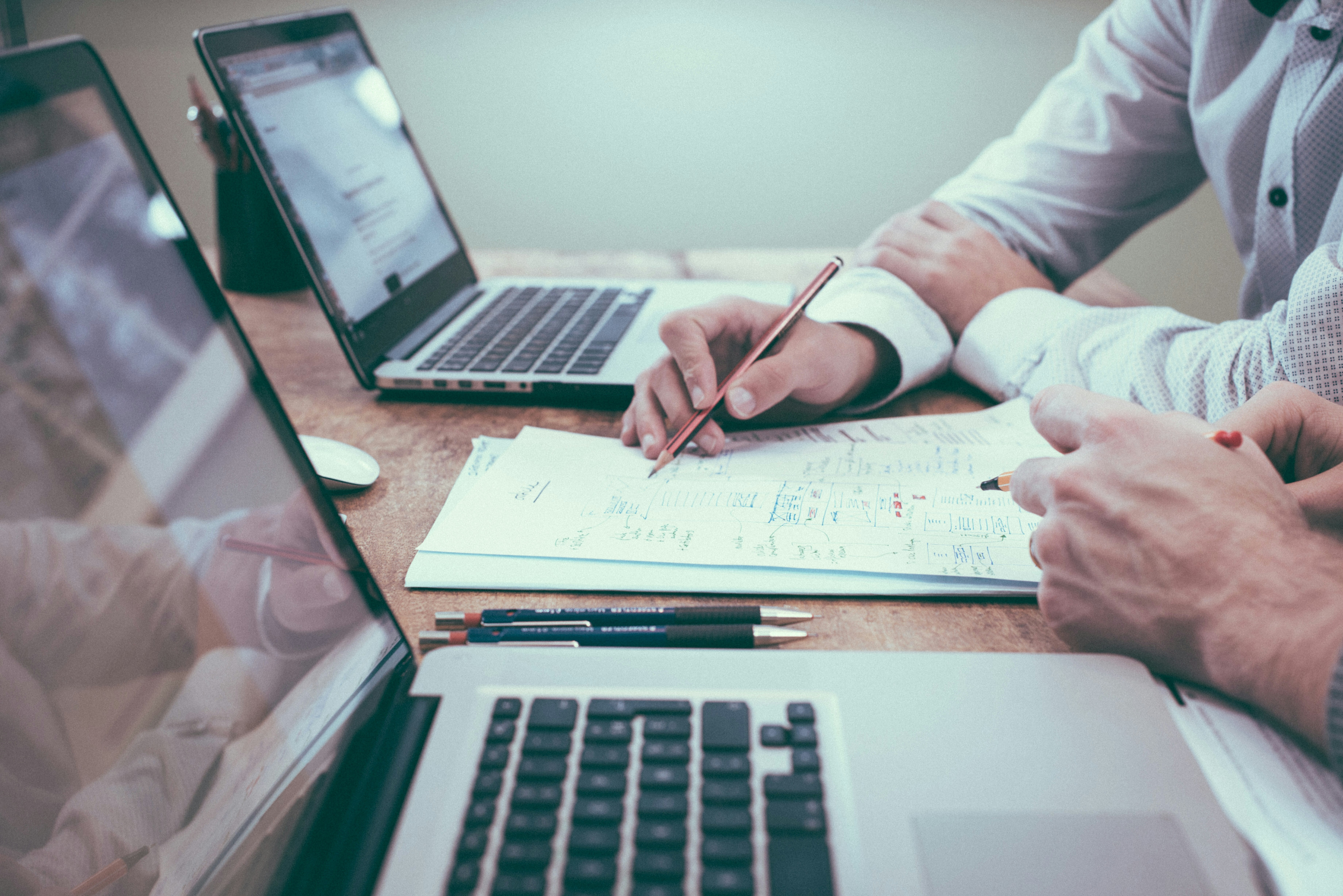From space to the ocean's depths - how a space CEO and explorer approaches risk
Transcripción del podcast
This transcript has been generated using speech recognition software and may contain errors. Please check its accuracy against the audio.
Dylan E. Taylor, Voyager Space: I think space is a blank canvas by which we can sort of reimagine what it's like to be human.
Linda Lacina, Meet The Leader: Welcome to Meet The Leader, the podcast where top leaders share how they’re tackling the world’s toughest challenges.
Today we talk to Dylan Taylor, the CEO and Chairman of space infrastructure company Voyager Space. He’s man who has traveled into space and to the deepest part of the world's ocean. He’ll tell us what those adventures taught him about risk and how he gets himself prepared for nearly anything.
Subscribe to Meet The Leader on Apple, Spotify and wherever you get your favorite podcasts. And take a moment to rate and review us. I’m Linda Lacina from the World Economic Forum - and this is Meet the Leader.
Dylan E. Taylor, Voyager Space: When you go to space, once you see that you can't unsee it,
Linda Lacina, Meet The Leader: Dylan Taylor is the chairman and Chief Executive Officer of Voyager Space. That is a space infrastructure company and one of a few companies awarded contracts to help build the replacement to the aging International Space Station.
Since its creation, the Space Station has been a hub for game changing research in biopharma and a an inspiring example of just what global cooperation can actually accomplish.
He and his team are working hard to make sure that that good work does not go interrupted and there is no ‘space station gap’.
But they’re working to get in place the infrastructure needed to ensure that as many people as possible can one day live and work in space.
He talked to me at the Annual Meeting in Davos about giving everyone that chance and why that’s so motivating to him.
He also talked about his own trip past the Karman line - the boundary between Earth's atmosphere and outer space – and how it changed him.
Dylan is an also avid explorer and he also shared his experience travelling more than 35,000 feet into an area of the Mariana Trench, an area in the west pacific ocean that humans had not yet visited. He talked to with me his unique take on risk and how it informs his approach to entrepreneurship – and understanding a problem before he takes action on it.
He’ll talk about all that. But first, he’ll tell us a little more about the International Space Station.
Dylan E. Taylor, Voyager Space: So, the International Space Station, which again is in my view, should win a Nobel Peace Prize for what it's demonstrated, it really was never a master planned from the beginning. Right. So, it was cobbled together over time. Modules assembled. The systems integrate, but not perfectly, right? So, for example, the propulsion system is part of the Russian module. The energy production and distribution is part of the American module. Those don't necessarily work hand in hand in certain contexts.
We have a space debris issue, which I hope we get to. Space sustainability is a huge issue. So oftentimes the station needs to dodge debris. It has been hit by debris. Small little specks of paint even can do damage to the Space Station because they're moving so fast in orbit.
We had an air leak on the Russian module last year. Very serious, actually, and is a threat to the astronauts, of course. So ageing systems, systems that weren't necessarily meant to last this long. Systems that weren't necessarily meant to integrate with other systems that are now on the station. So, putting that all together really leads us to believe that the station is going to have a hard time, frankly, lasting through the 2020s.
Linda Lacina, Meet The Leader: And the new infrastructure, knowing everything you know now, knowing all the uses people have, knowing all the new businesses that are coming up, what is being built into and what are you factoring in when you're designing the new infrastructure?
Dylan E. Taylor, Voyager Space: Yes. So, our space station is called Star Lab. And so, we're really leaning into the laboratory space, in space. We think you go to space to benefit Earth. And so, we very much want to make sure that all of the great things we can do in space -- you know think of it as a flying laboratory. And in fact, we're building a terrestrial version of that same laboratory in the US so that we can stage the experiments, make sure that all the bugs are worked out before we put them on station, and then after the experiments are done on station, bring them back terrestrially, and be able to iterate on that. So, we think that's the right model, but it's very much going to be focused on science.
Linda Lacina, Meet The Leader: So much of the science that is being done in space does directly ladder up to sustainability issues and ways that we can sort of better understand weather, better understand the climate, things like that. Tell me a little bit about that, the types of experiments.
Dylan E. Taylor, Voyager Space: Yeah, so there's a couple of categories. One is space manufacturing. So, for example, there are things that we can make in space that we literally can't make as well on Earth. What's an example? Optical fibre. Optical fibre might go into an endoscope that might be used in a surgery. When you draw those fibres out on the Earth, there are going to be inclusions on there. Inclusions are small defects. Those defects are caused by gravity. So, if you do that same manufacturing process in space, those inclusions are drastically reduced, which means transmission is drastically increased and you get much higher quality medical grade fibres. So that's one example.
Drug development. When you think about drug development, pharmaceuticals operate in the three dimensions, right? Because our bodies are three dimensional. When you're running experiments in a petri dish, that's by definition a two-dimensional system, and it's being squashed by gravity to alleviate that or to mimic the body we do animal trials, which are very controversial, very expensive, and often times don't necessarily work the way we want to.
So, if you take that same petri dish, metaphorical petri dish, and you put it in orbit, then all of a sudden you get three dimensions. Those chemical reactions are happening in all three dimensions. It more thoroughly mimics what's happening in the human body, and you can get greater insight into drug development. And it also -- think of it almost as a slow motion machine. It slows chemical reactions down because chemistry is all about convection and knocking molecules together. So, your insight into these experiments is dramatically increased when you're doing it in microgravity research.
Linda Lacina, Meet The Leader: There's so many different new start-ups that are entering the space economy. The space economy is growing more and more every day. What's needed to scale the space economy even further?
Imagine a world where all our heavy industry is moved off the Earth. All the polluting forces are moved off the Earth, and those are actually in space. The Earth becomes, a Shangri-La, a national park, if you will.
”Dylan E. Taylor, Voyager Space: I'm in the camp that says space is a tool for transformation. So, I had the privilege of going to space myself about a year ago. It is a life changer. The overview effect is real. I can vouch for it, and all the astronauts I've ever met can vouch for it as well. I think it's a universal phenomenon.
So, what motivates me really as a leader is to try to get, as you say, as many people up there as we possibly can. And to do that, we need to build an infrastructure layer and we need destinations. We need things like power generation. We need things like position, navigation and timing. Think of a GPS constellation that operates in space. But we need all those infrastructures, all the railroad tracks, so to speak. And to do that, we can then build a beachhead in space which allows people to live and work in space.
In my vision, which is shared by many others, is that, imagine a world where all our heavy industry is moved off the Earth. All the polluting forces are moved off the Earth, and those are actually in space. And the Earth becomes, you know, a Shangri-La, you know, a national park, if you will.
I think that's a beautiful vision. And I think it's a beautiful vision where everyone has the ability to see the world as it truly is and how much of a miracle it is. Some people already know that, but I can tell you, I think it's universal. When you go to space, once you see that you can't unsee it, it penetrates you very deeply. And I wish everyone had the privilege of going.
When you go to space, once you see that, you can't unsee it.
”Linda Lacina, Meet The Leader: You talked about this vision for -- this beautiful vision -- for what it could look like if we really were able to sort of build this out. What could hold that vision back?
Dylan E. Taylor, Voyager Space: Well, I think our track record isn't great, right? And so, what I'm talking about is sort of humanity 2.0, reimagining what it's like to put our species first, put life first, as opposed to parochial individual interests. And our track record for that hasn't been great.
So, I think what could prohibit this from happening, I think it's just a lack of cooperation, a lack of collaboration, and really a lack of imagination. Right. I mean, I think the world is what it is. It's better than probably it was 500 years ago and better than it was 5,000 years ago.
But we're still playing what I would call small ball. We're still playing, I think, to the lowest common denominator. And we're not looking at what is possible and we're not pushing things that are important to me and I think to others, including higher levels of equality, higher levels of environmental awareness, higher levels of stewardship for our fellow human. And I think space is a blank canvas by which we can sort of reimagine what it's like to be human.
We're still playing what I would call small ball. We're still playing, I think, to the lowest common denominator. And we're not looking at what's is what is possible
”Linda Lacina, Meet The Leader: You were the 606th person, human, to go to space as part of Blue Origin's New Shepard mission. I was reading that. What? What surprised you about that experience?
Dylan E. Taylor, Voyager Space: A couple of things. One is how much I enjoyed the lead up, the training, the bonding amongst the crew. It's a very, very deep bond. Very, very deep bond. And I wasn't anticipating that.
I wasn't anticipating not being scared. I thought I would be terrified. I thought when we got to final Countdown, you know, the infamous ten, nine, eight, that I would be a mess. The fact is, I wasn't at all. And it wasn't just me. Our entire crew was comfortable.
And I think it's because the training is good, but it's also, you know, a sense of peace. Right? This was a lifelong dream for me. And, you know, if you go, you go. Right. If it's your time, it's your time. At least you're doing what you love.
And I had this conversation with my youngest daughter about the safety of the flight. And I said, her name is Morgan. I said, Morgan, look, everyone dies. But very few people truly live and very few people push the edge of what's possible. And that is in the human nature. And I think the more we do that, the better off ultimately we are as a species. And if I can play a small part in that, then then I'll do that.
Linda Lacina, Meet The Leader: You have commercial astronaut wings with the FAA, and you also have universal astronaut wings from the Association of Space Explorers. So, can you tell me a little bit about what's involved sort of get those bona fides?
Dylan E. Taylor, Voyager Space: Yeah, you know, and it's a bit controversial. So, you know, again, this is this is humans being human. It's not good enough to go to space. It's like, well, how high did you go? And was it really space and was it not? So, there's controversy over the so-called Karman line, and it's mainly between Virgin Galactic, which is Richard Branson's company and Blue Origin.
And, you know, for the record, I think the Karman line should be around 52 nautical miles, which is about 85 kilometres. Other people think it should be 100 kilometres, but the FAA wings, which they no longer award, and the FAA got out of the business of doing that. I think I got the last set, our crew did. So, for that you had to fly before December 31st, 2021, across the Karman line, which we did.
And then the universal astronaut wings, that's the Association of Space Explorers. And it reminds me of the WEF in fact, because it's a very collaborative international organisation where all countries come together. It's really apolitical in the sense that everyone tries to work together to unify around space issues, and for that they have two sets of wings. They have orbital wings for people who have been in orbit and typically stayed in orbit for a period of time, and then they have suborbital wings. People have been above the Karman line, but didn't actually make a full orbit around the earth.
Linda Lacina, Meet The Leader: I would imagine that there's a little bit of an adjustment with some of this training -- that it can be quite challenging.
Dylan E. Taylor, Voyager Space: A bit. Yeah, honestly, it's very enjoyable. I think of it as almost fantasy space camp. And the key thing you're really doing is you're doing simulations. So, if something goes wrong, what do you do? How do you recognise when something's going wrong? And there are procedures that you need to follow to a tee. Because if there is an issue and you're not in the, let's say, the proper position in your seat, you will not survive. Just full stop. You won't.
However, if you are in the proper position, it's likely you will survive. So small elements of your training you really need to pay attention to.
But to me, I loved it. It was like a puzzle that you needed to solve. They would always throw a monkey wrench into the simulation, and you would have to figure out what to do. And, you know, for being a space nut, it was quite enjoyable for me.
Linda Lacina, Meet The Leader: And you also descended, I'm reading this to make sure I have it correct, to the deepest part of the world's ocean -- and that was a sort of part of this expedition last summer. How far did you descend and what was that like?
Dylan E. Taylor, Voyager Space: Yeah, you know, it's interesting. I don't think of myself as an explorer. Sure, I know that maybe sounds odd, but when you go into space, people sort of assume that you're going to say yes to these sorts of crazy opportunities. And in fact, I was offered the opportunity to go to the bottom of Mariana Trench to Challenger Deep. And to me, it was one of those things where it's like, how do you say no to that? Of course. And I was super fascinated by it.
So, you're descending for four and a half hours? Yeah, dropping like a stone. And it is 10,900 metres at its deepest point, which is crazy, crazy deep. And it was fascinating. Yeah, I really. I really enjoyed that. You're four and a half hours down, 2 hours at the bottom, and then four and a half hours back up.
Linda Lacina, Meet The Leader: I would imagine that with any of this, exploring is sort of a form of adventure. When you go on an adventure, when you go into space, when you go into the deep, if you have a problem, you have to move forward. You have to find a way to solve it. How has that experience with adventure helped you with entrepreneurship?
Dylan E. Taylor, Voyager Space: Yeah, that's a great question. So, I think I'm all about calculated risks. So, the way I approach these problems is I don't throw caution to the wind. And in fact, I'll ask hundreds of questions.
When I committed to go to Challenger Deep, again, back to my family, I told them, I said, look, I'm not committing to diving. I'm committing to getting on the vessel. I'm committing to going to the dive site. And if I'm not comfortable, I'm not I'm not going to do it. And so, I asked literally hundreds of questions.
So, the way I approach it is really try to understand the problem, look at it from every possible angle. What could go wrong? If so, what's plan A? What's plan B? What's plan C? I don't think one contingency plan is enough.
But then what's interesting, I think about the way my mind works is once, once I'm satisfied to meet, then switch to what looks like a riskless mode, right? Because all my curiosities have been resolved, all my questions have been answered, and then I completely trust in the system. So, it's sort of a very high screening process that then leads to, I trust the system and I have no concerns at.
Linda Lacina, Meet The Leader: All that sort of preparation -- let me know if this is the case. Does it give you comfort with making decisions more quickly because you're prepared? And when situation presents itself, you don't feel like you need to dwell.
Dylan E. Taylor, Voyager Space: For sure, yeah, for sure. And that to me, that's the benefit of really understanding the problem. Understanding what you would do if X, Y and Z happens. But then again, to reemphasize, having a backup to the backup and a backup to that, I think it's really, really important because many people have said this the plan is less important than the planning and thinking through. You know, what are all the optionality and thinking in terms of probabilities and, you know, what could happen, What's likely to happen, what's probable to happen, What's possible to happen?
I think it's a good way to evaluate complex problems. And to your point, I think it allows you to go quicker and operate more on the fly, but not by the seat of your pants, you know, with the thoughtfulness that you've already thought through.
The plan is less important than the planning.
”Linda Lacina, Meet The Leader: You don't have to panic because you kind of have a sense of what I would need to do. I have a framework that I can work with.
Dylan E. Taylor, Voyager Space: Exactly.
Linda Lacina, Meet The Leader: You had mentioned that one of the things that had surprised you was the bond between the crew members. How has that maybe informed how you work with teams now at Voyager Space?
Dylan E. Taylor, Voyager Space: Great question. I mean, I'm of the camp as a leader that whoever has the best people has the best company. To me, it's that simple and that hard, of course.
And I also believe that A talent hires A talent and typically B, talent hires C talent. So, to me, my job as a leader is to get the very best possible people on my team that I trust and that trust each other and really get that cohort synergized and bonded very tightly and then empower them to do the same thing with their teams.
And if you get that right, honestly, everything else becomes pretty easy. And so, I think it's all about the people. It's all about it, which I know is a cliche. I know it's trite. In fact, I heard that when I was a young rising executive and I thought, it can't be that easy. And it isn't easy. It's that simple.
But it's actually incredibly difficult to do when you're putting your life on the line which you are when you're going to space. Even if all the risks have been evaluated, you really need to trust the people you're with, obviously.
Linda Lacina, Meet The Leader: How do you build that trust with your team?
Dylan E. Taylor, Voyager Space: So I'll tell you the way we did it on the spaceflight, and I think it's similar to the way I approach it. I think it is a work hard, play hard.
And when I say play hard, it's not anything crazy. We, for example, on the space flight after training all day, there was a basically a bonfire pit and we were all exhausted. We all wanted to go back to our rooms, but we sort of forced ourselves to get around the, you know, the metaphorical bonfire, if you will, and just share stories, share stories about our hopes, our fears, our families, how we grew up, trials and tribulations, and expressed some vulnerability. I think it's very hard to bond with somebody if you don't make yourself vulnerable to them. And it's very difficult to get people to do the same to you if you're not open with them.
So, I think it's one part of putting in the time. I think it's expressing the vulnerability. And common vision I think is critical as well. You know, what are we doing? What are we trying to accomplish? I think that's important.
Linda Lacina, Meet The Leader: You're an entrepreneur. You work with space and innovation. I'm sure that there has been a time when you've hit a wall where there's a moment where you're not entirely sure how you're going to get past it. You do, But there's a moment. Is there something, an anecdote that you can tell us, of one of those moments and what you did to push through it?
Dylan E. Taylor, Voyager Space: There's a ton of them. I mean, I think if you're not making mistakes, then that means you're not making decisions. Right? And if you're not failing, it means you're not aiming high enough. So, it happens all the time where I fall short of what I'd like to do or, you know, what might be the case.
You know, the hardest moment I can remember is -- typically it's during crisis and you might have apprehension yourself. Something's happening that affects you personally, but your role is not to commiserate with your team, Right? Commiseration is a natural human emotion, but your team doesn't need commiseration. Your team needs reassurance. Your team needs to know that, yes, you feel what they feel, but you also are willing, -- ready, willing and able to lead them through whatever that crisis happens to be.
If you're not making mistakes, then that means you're not making decisions. If you're not failing, it means you're not aiming high enough.
”Linda Lacina, Meet The Leader: Is there a book you recommend?
Dylan E. Taylor, Voyager Space: Yeah, a book that changed my life and really got me into space full time, which has been a lifelong passion, is called The Last Lecture. It was written by Randy Pausch. It's a book. It's also a lecture that you can watch on YouTube. I'd probably commend to you the YouTube first and then the book second. And I won't give it away, but it's he's a professor at Carnegie Mellon, and their tradition when people are retiring is to give a last lecture. This is his last lecture.
Linda Lacina, Meet The Leader: And what would somebody take from it if they read The Last Lecture?
Dylan E. Taylor, Voyager Space: Well, I can tell you what I took from it. It is that you have to be leaning into your passion. And there are two elements of that. One is a lot of people say, I'm not really sure what that is. If you're not sure, go back in time. And the closer you get to your kind of first memory, the closer you are to what you're truly passionate about. So, you know, go back to your childhood in effect. So that's one key takeaway.
Second key takeaway, without giving too much away about the book, is that you can have your cake and eat it, too. You don't necessarily have to quit your day job and go full time in your passion. You can have your you can have both of those worlds for a period of time. And Randy was a great example of that. And in his lecture, he talks about that.
Linda Lacina, Meet The Leader: And one last question. In all of the disruption and all the challenges of the poly crisis that we are grappling with, what should leaders prioritise?
Dylan E. Taylor, Voyager Space: I think climate is probably a universal issue and again, going to space, seeing the earth. It's cliche, but it penetrates you so deeply that there is no other. There is no other place. There is no other people. Right. There's, you know, there's life, there's the human species and there's Earth. That's it.
And when you look at the Earth from space, and it's been said before, the atmosphere is so ridiculously thin. And in fact, if you didn't know the word atmosphere and you just saw the Earth, you wouldn't describe it as having an atmosphere. That's how inconsequential it is.
And there's a real risk that we tip this thing into, into a place where we can't technologically fix it. And I'm concerned about that. I think we need more creative solutions. I think carbon is an issue, but there has to be other ways for us to, you know, back to Plan A, Plan B, plan C, you know, how are we thinking through contingency plans to that?
Linda Lacina, Meet The Leader: That was Dylan Taylor. Thanks so much to him. And thanks so much to you for listening. A transcript of this episode and my colleagues' episodes of Radio Davos and the Book Club Podcast, is available at wef.ch/podcasts.
This episode of Meet the Leader was presented and produced by me with Juan Toran as studio engineer, Taz Kelleher as editor and Gareth Nolan driving studio production.
That's it for now. I'm Linda Lacina with the World Economic Forum - have a great day.
Dylan E. Taylor is the chairman and Chief Executive Officer of Voyager Space, a space infrastructure company and one of the firms helping with efforts to replace the aging International Space Station. He and his team are working hard to ensure there’s no ‘space station gap’, all while getting the infrastructure in place so as many people as possible could one day live and work in space.
In this episode, he talks about why expanding access to space motivates him, how his own visit to space changed him, and his experience travelling to one of the deepest parts of the ocean. In this conversation, recorded at the Annual Meeting in Davos, he also shares his approach to risk taking and how he prepares for big challenges - and how that strategy helps him make decisions quickly and navigate the unexpected. Scroll for transcript.
Alojado por:
Temas:
LiderazgoMás episodios:
La Agenda Semanal
Una actualización semanal de los temas más importantes de la agenda global
Más sobre LiderazgoVer todo
Sebastian Buckup and Maximilian Martin
2 de diciembre de 2025
